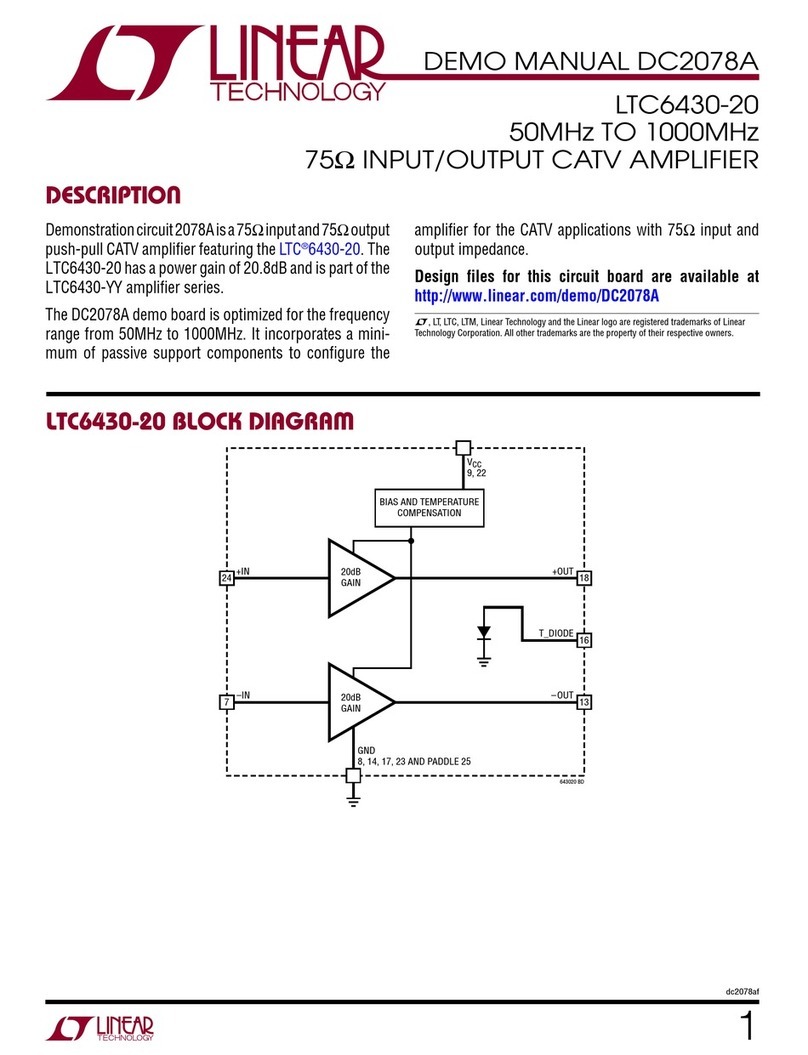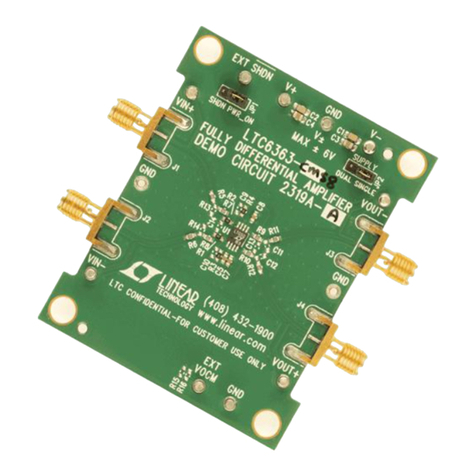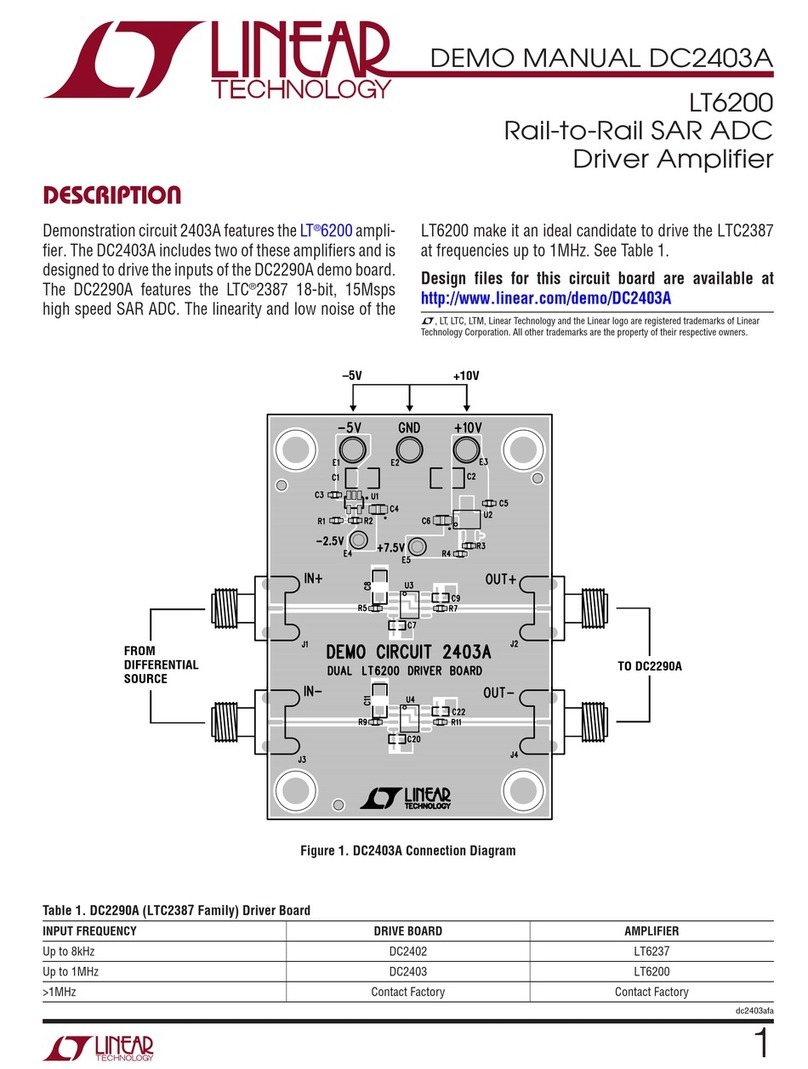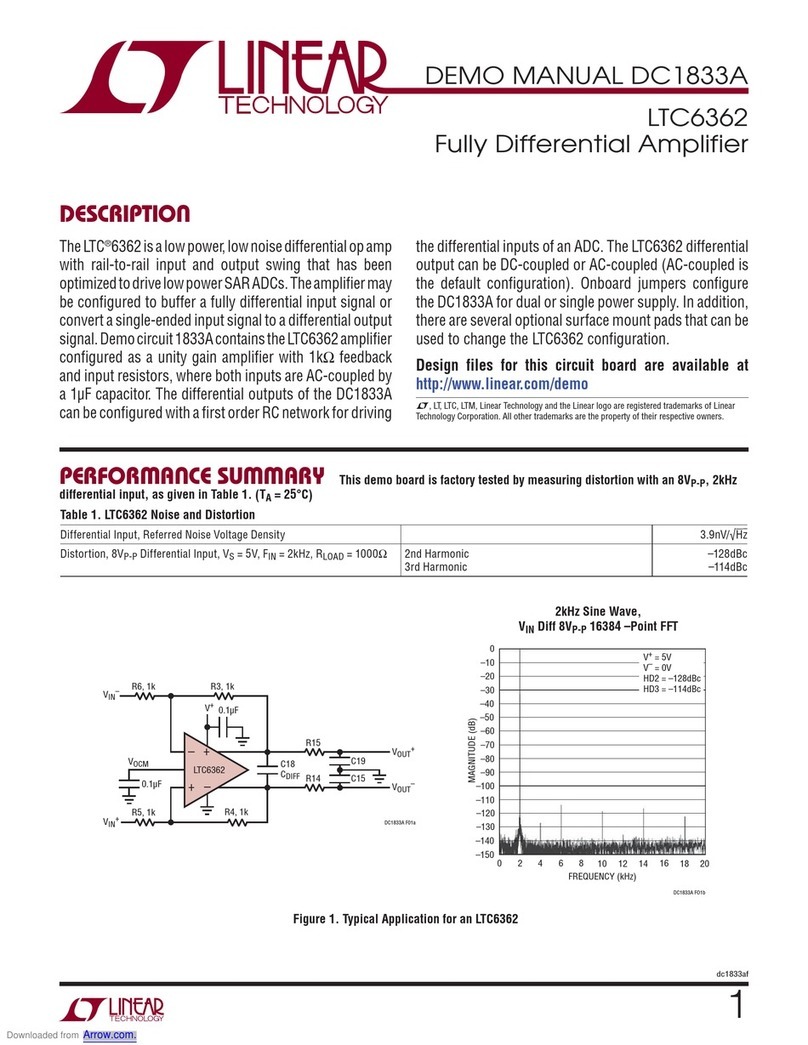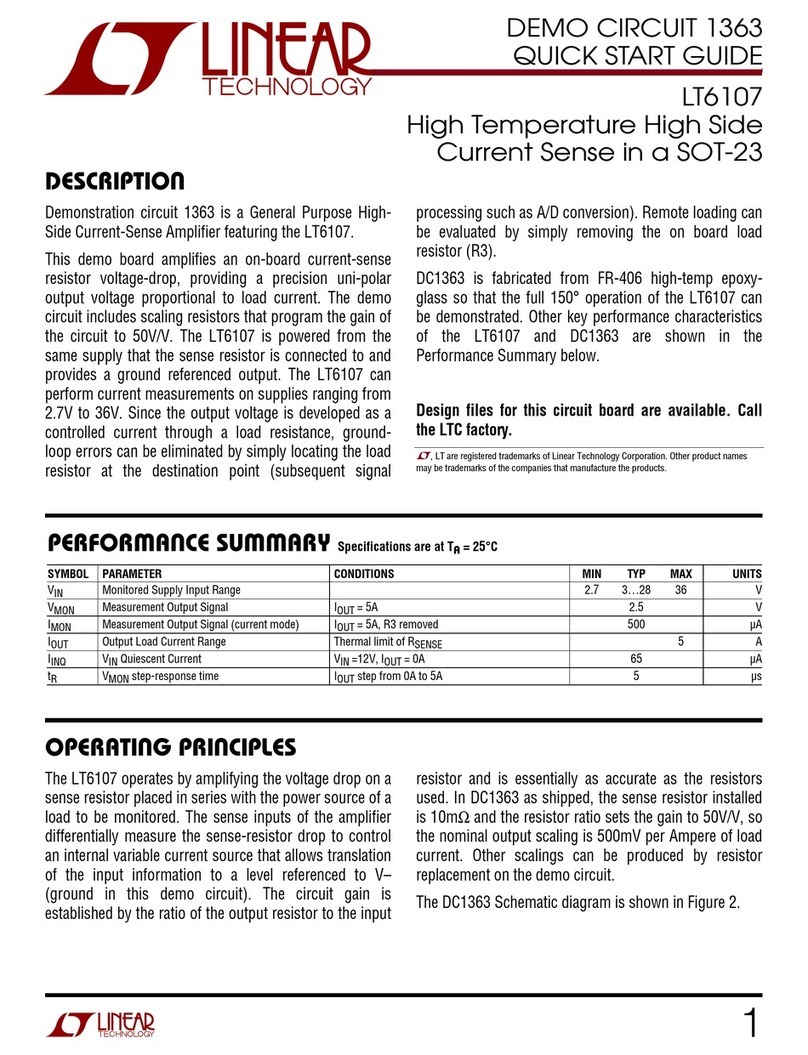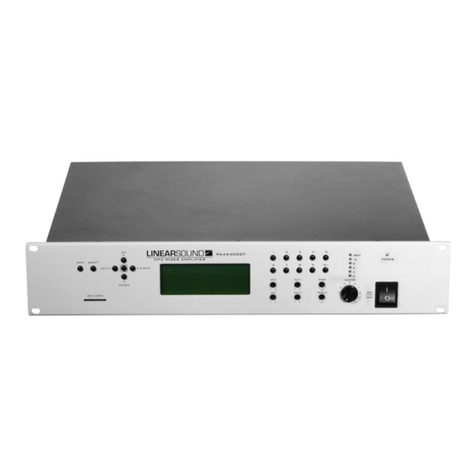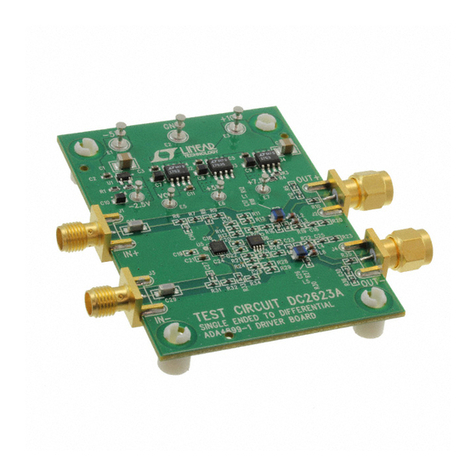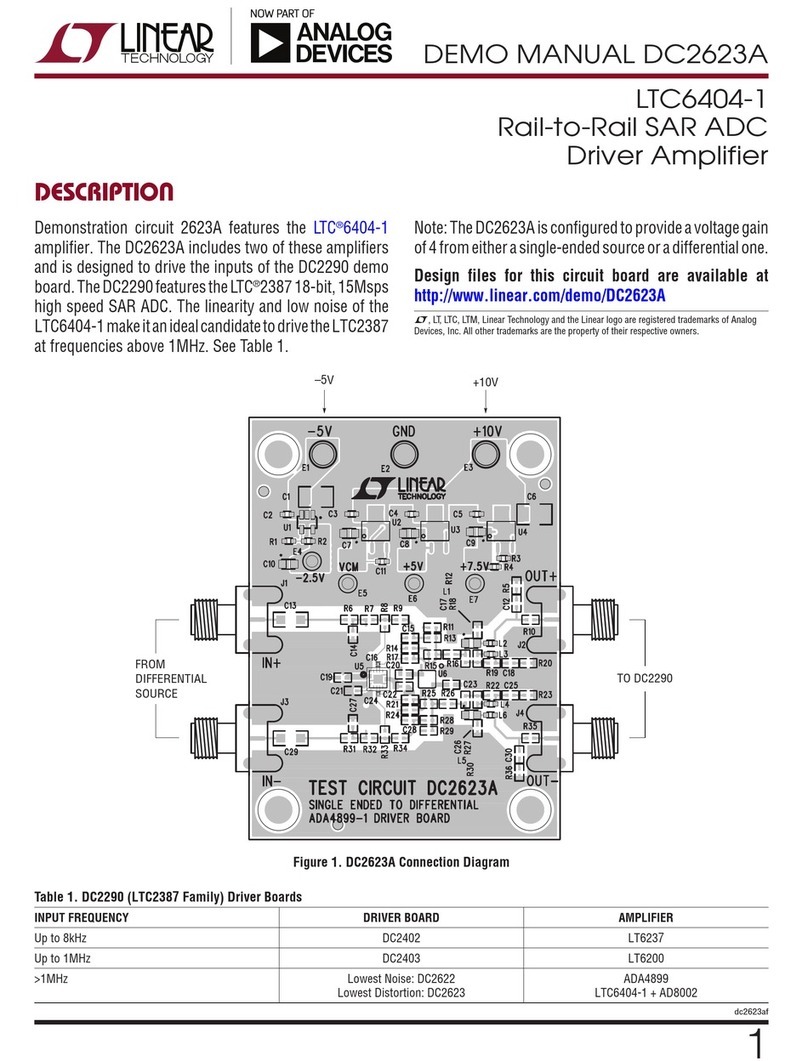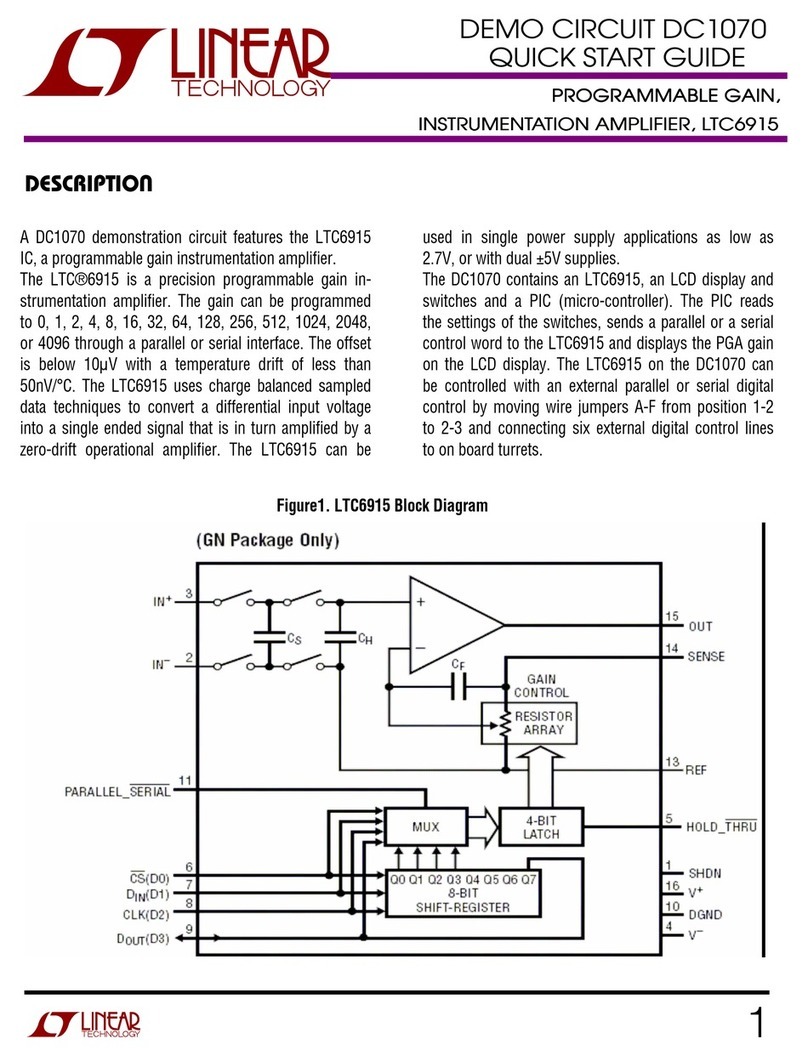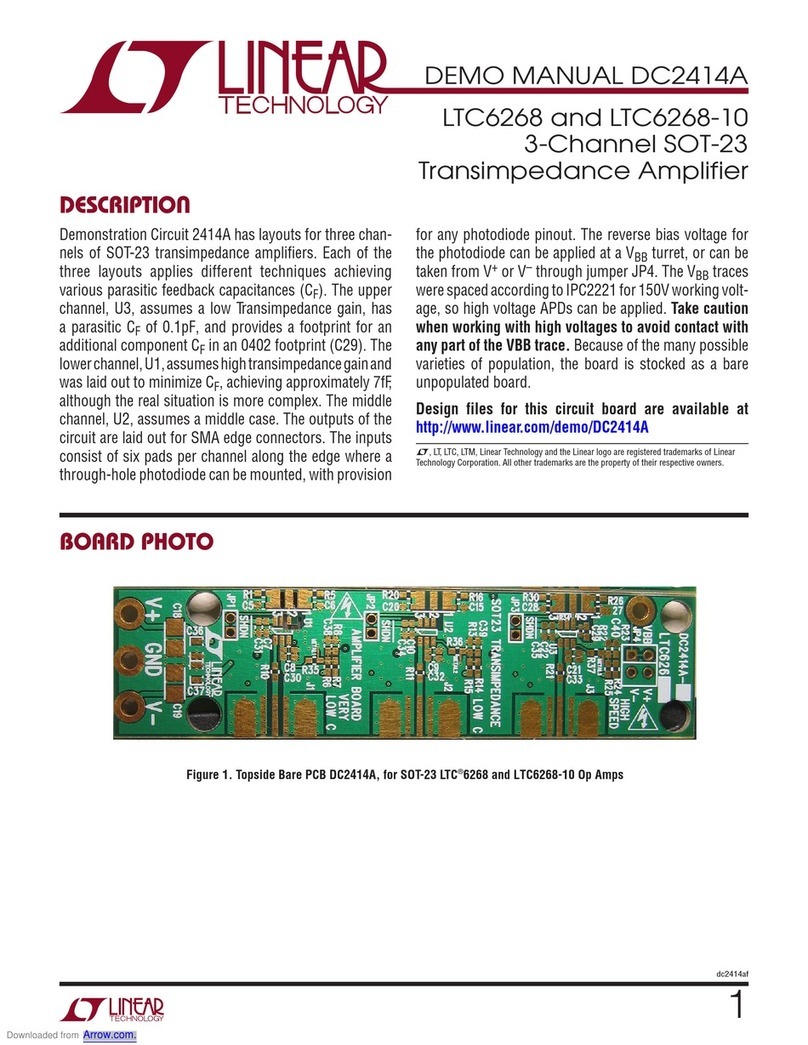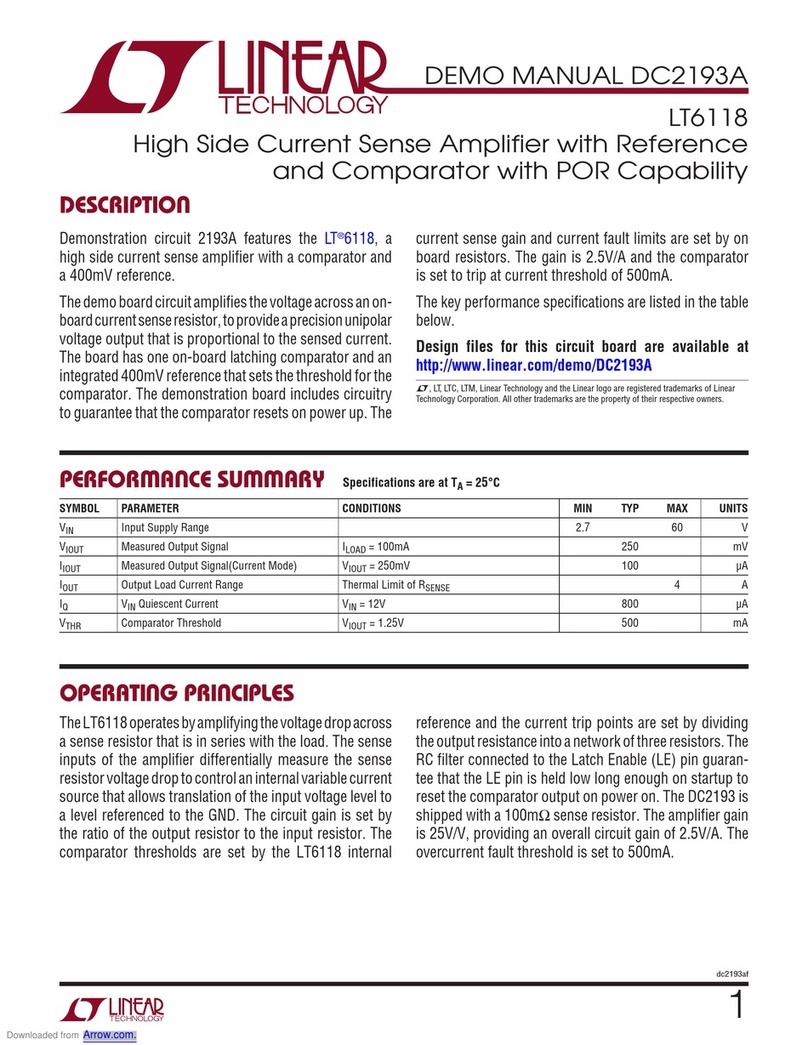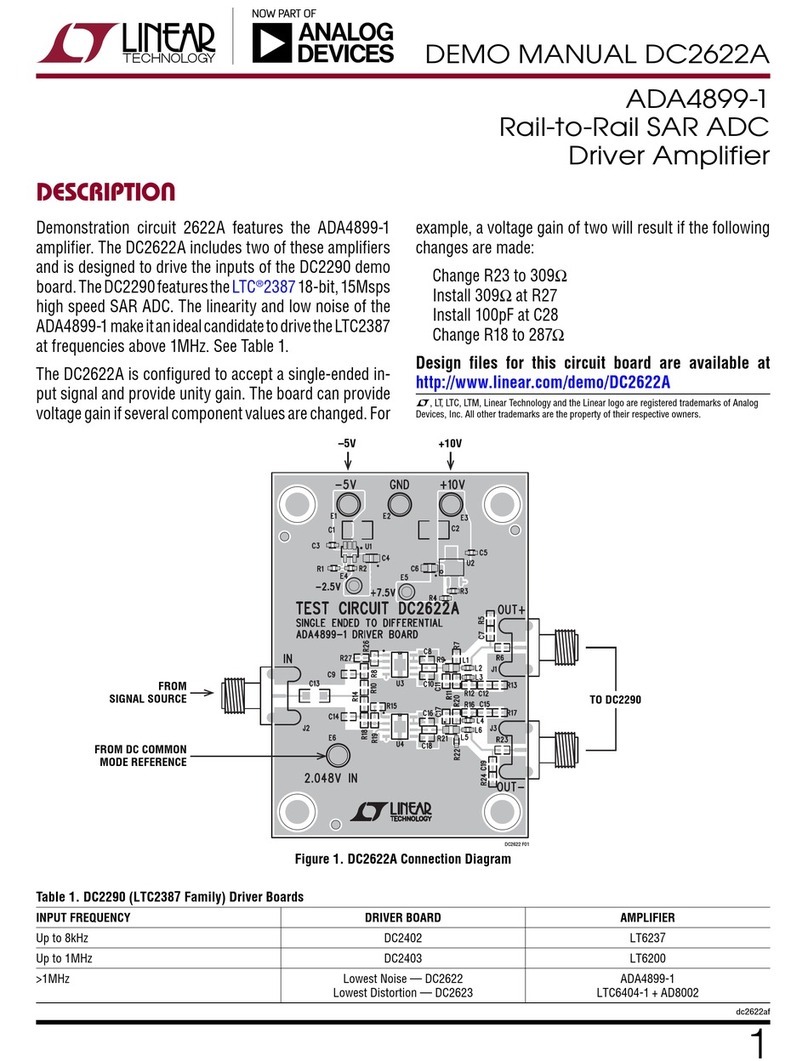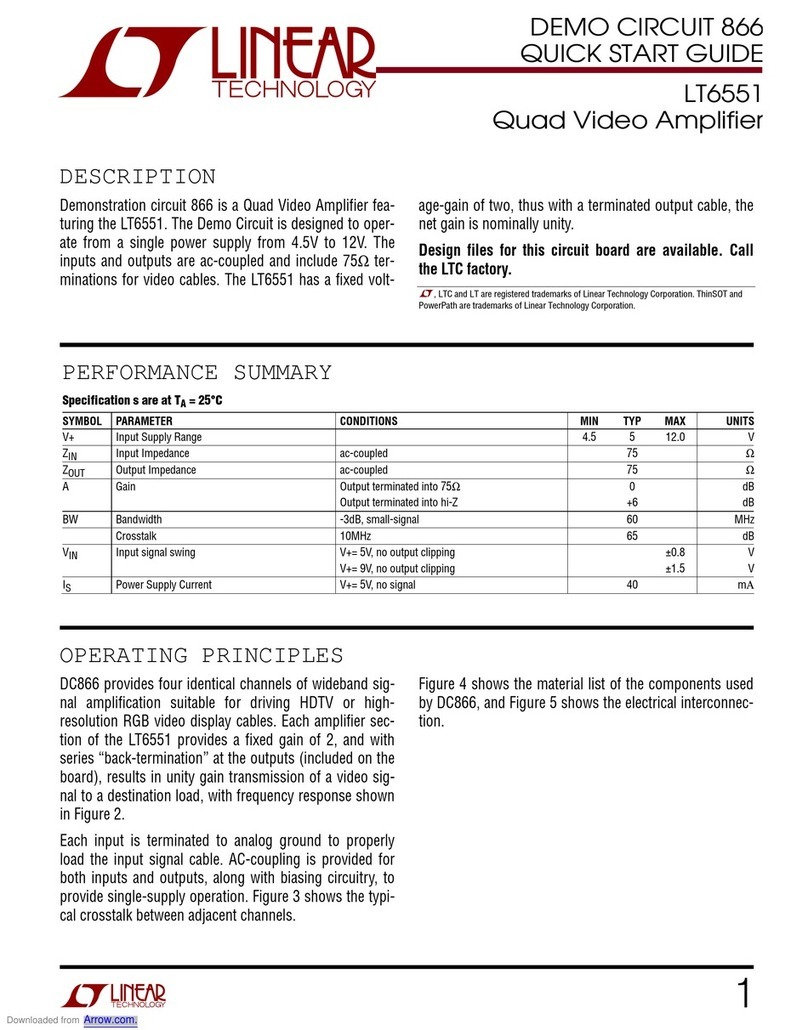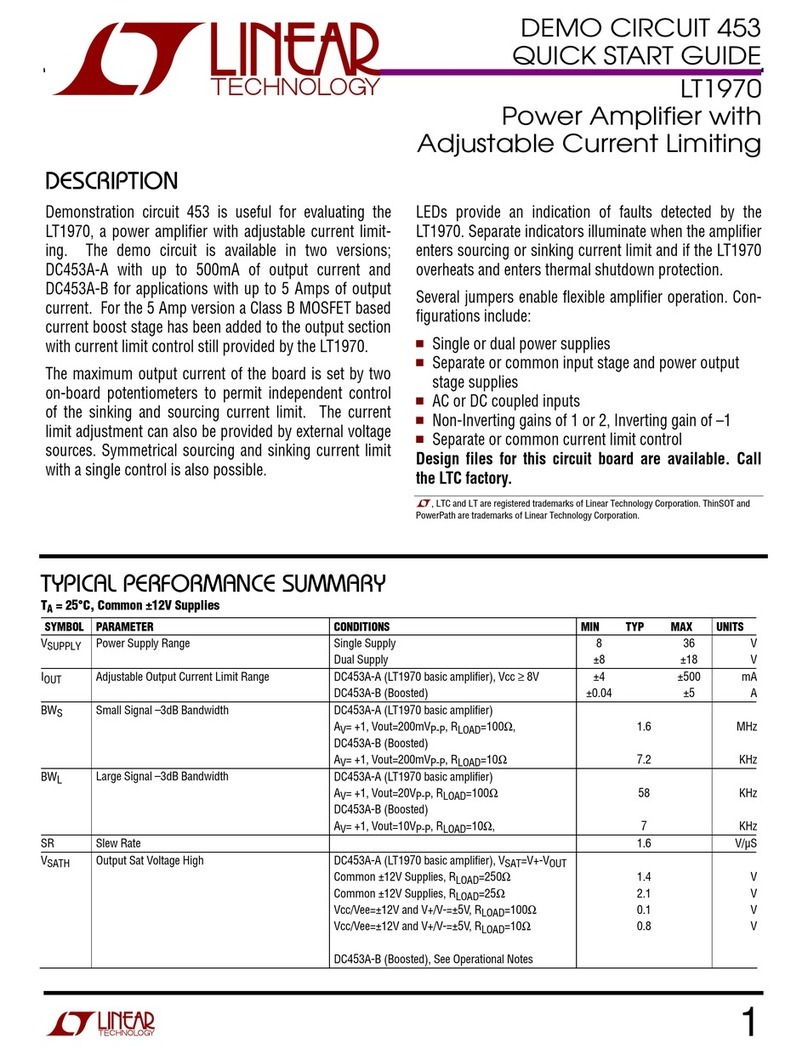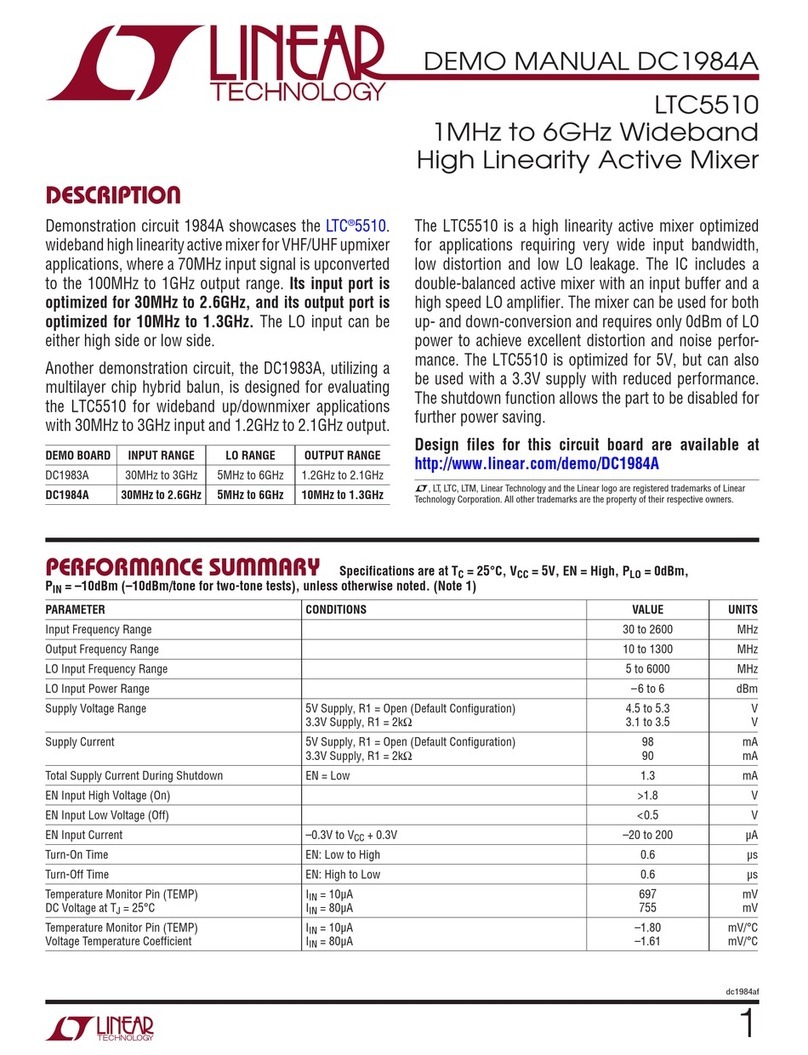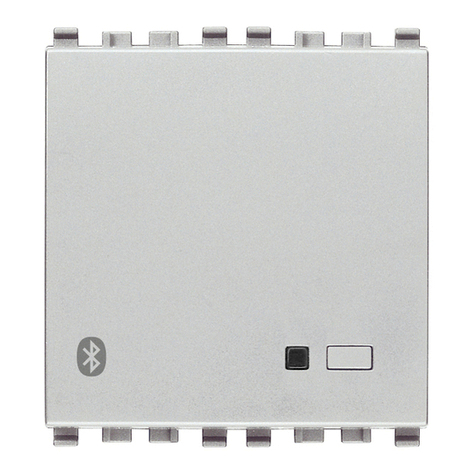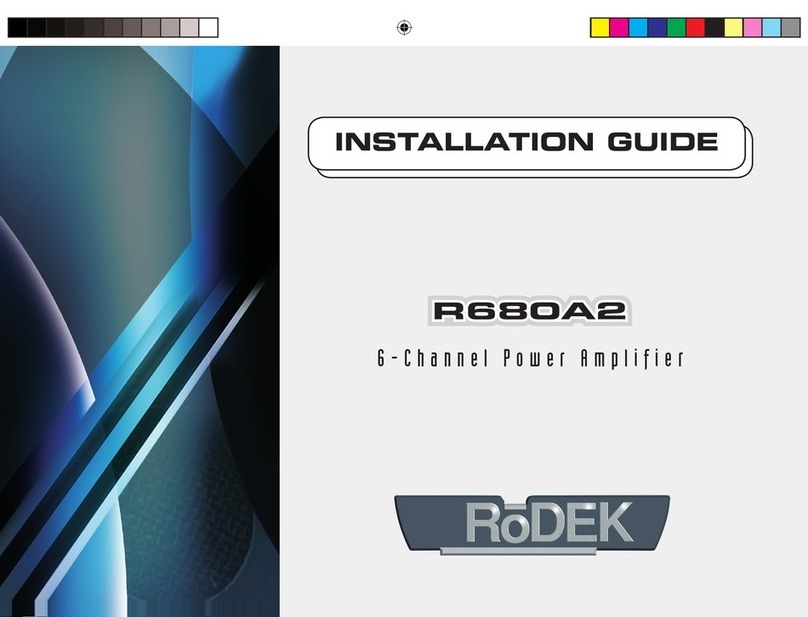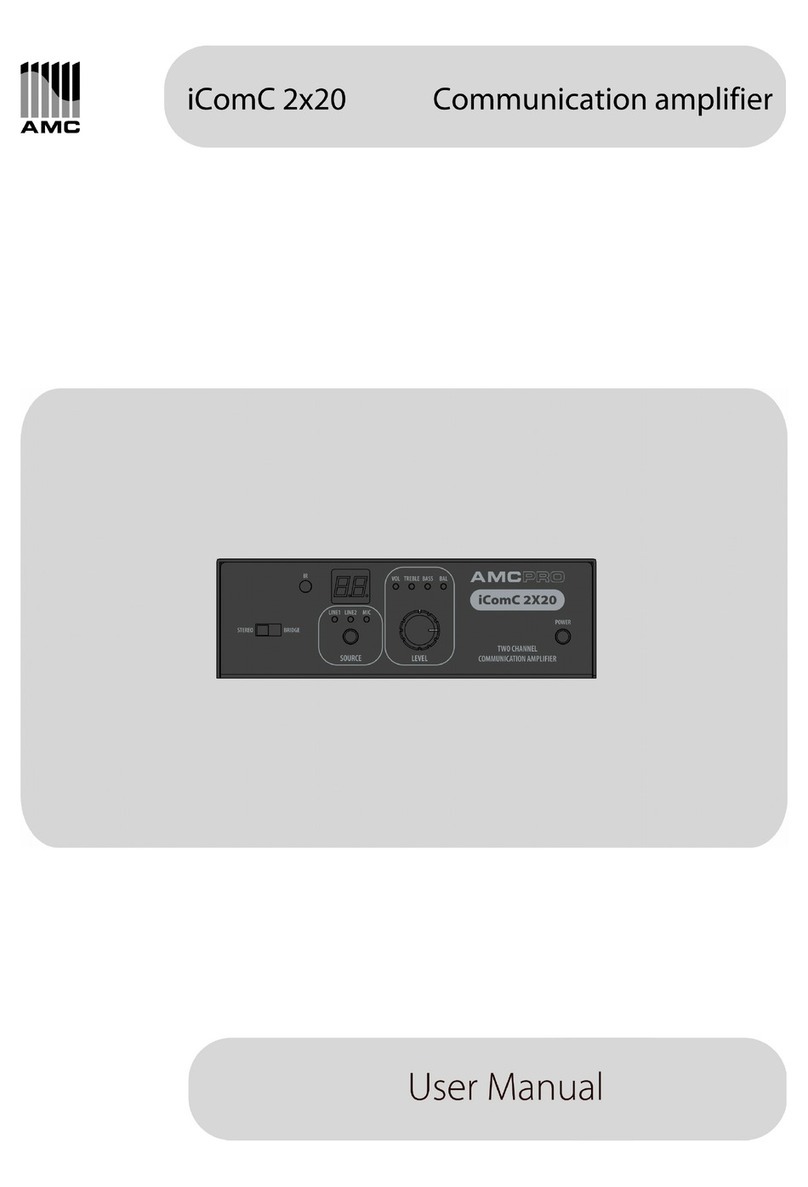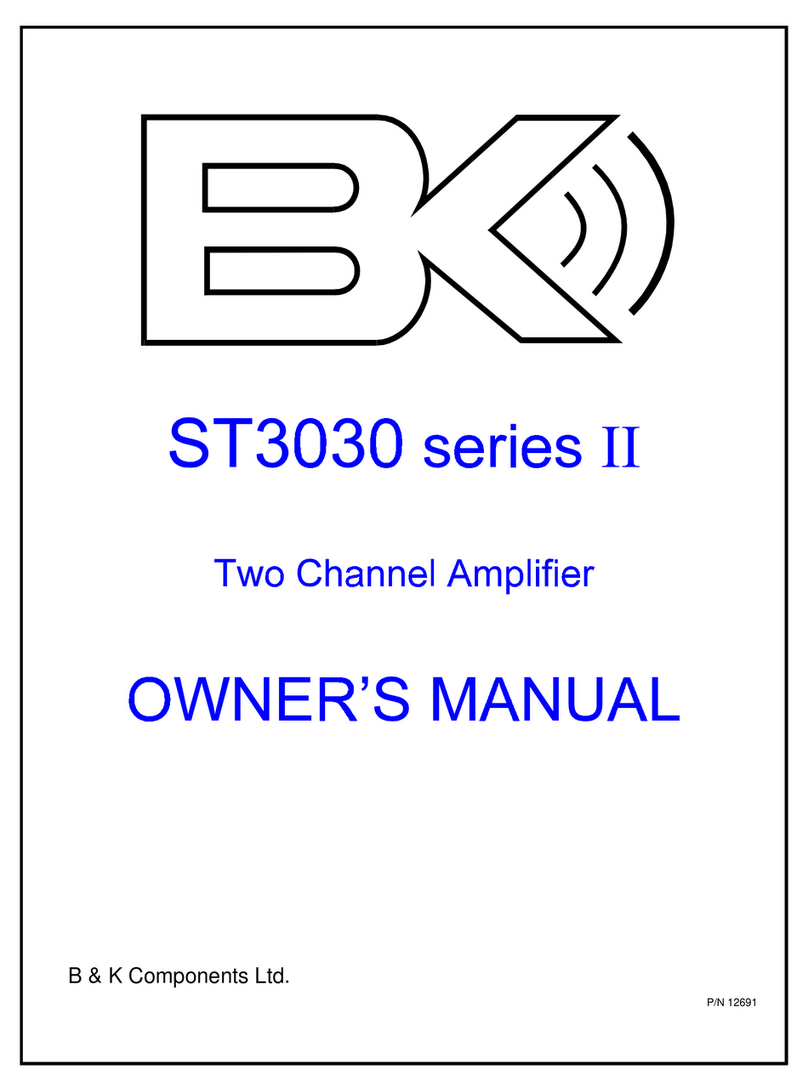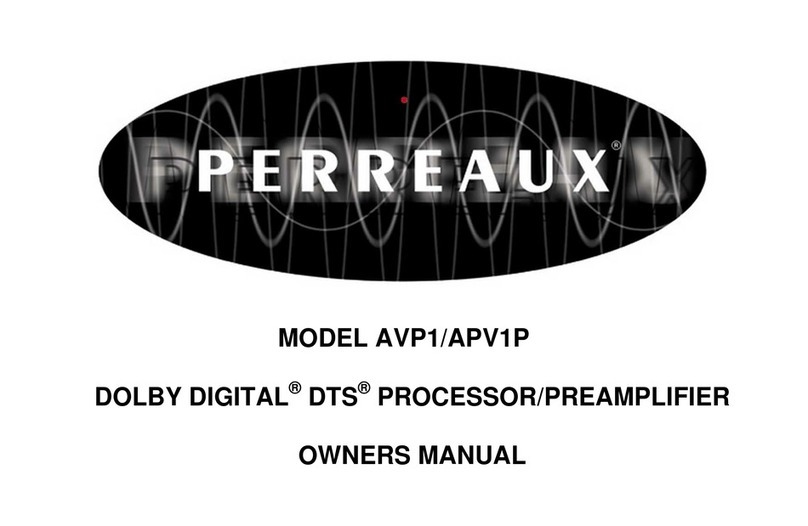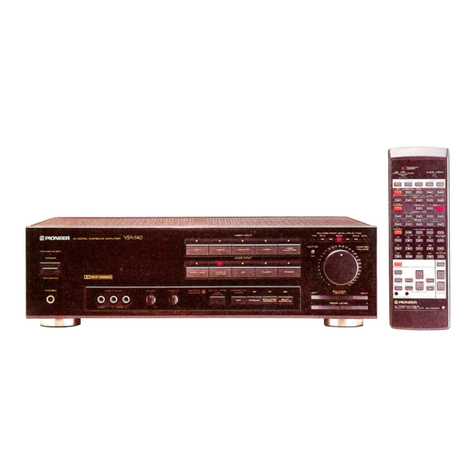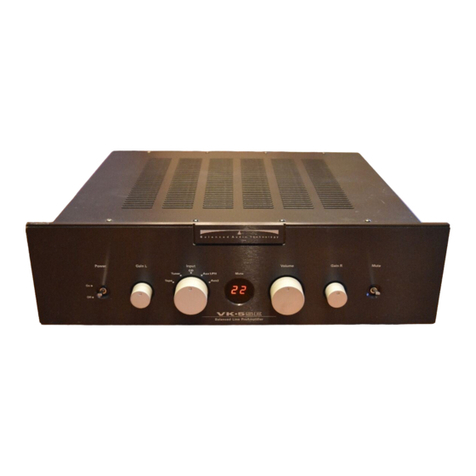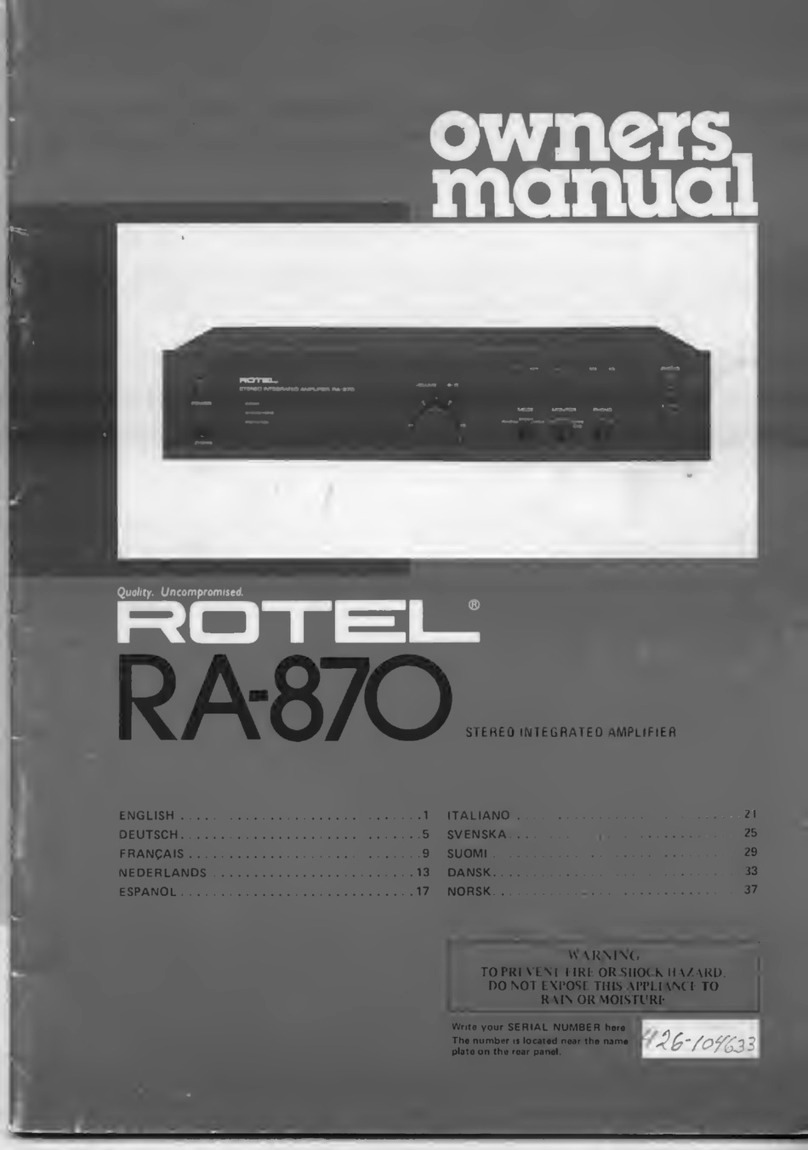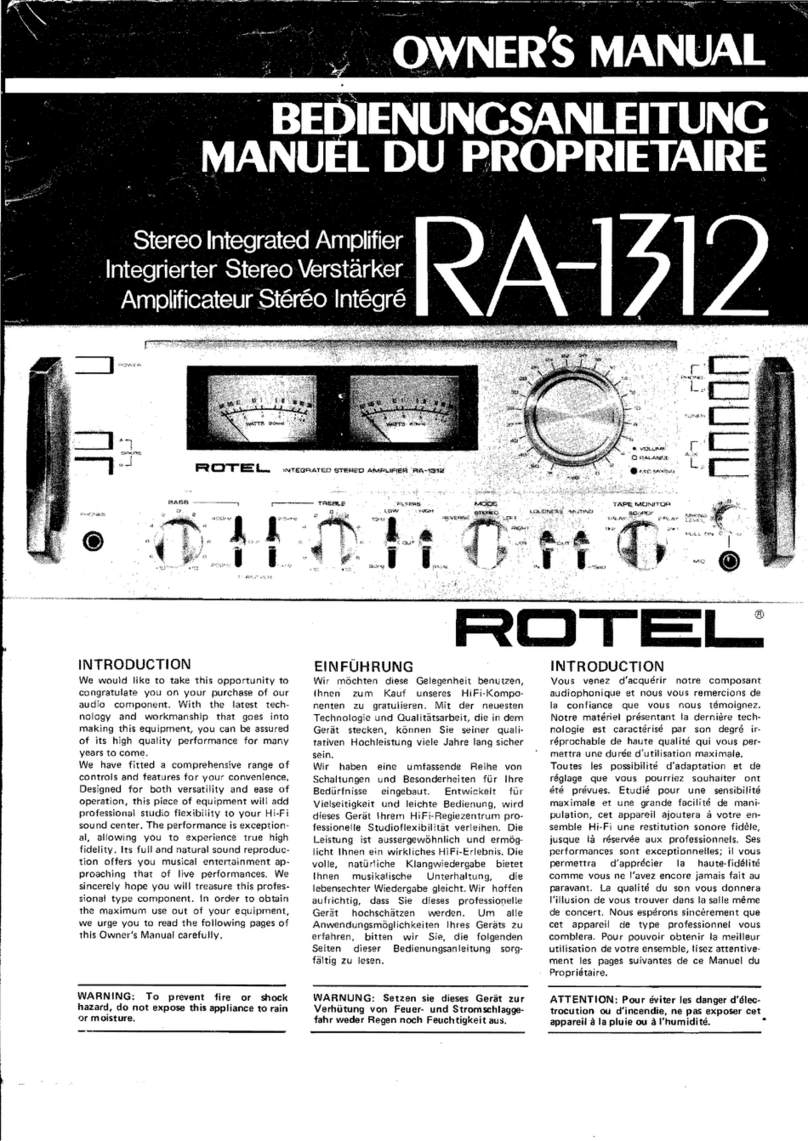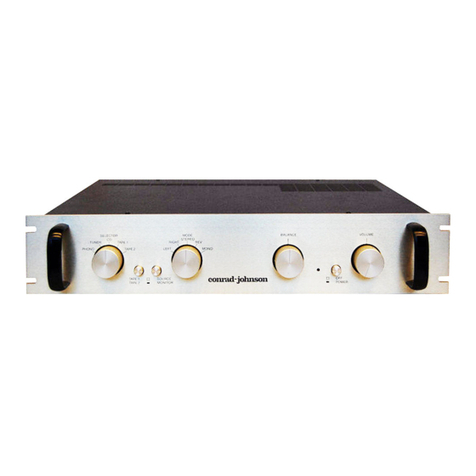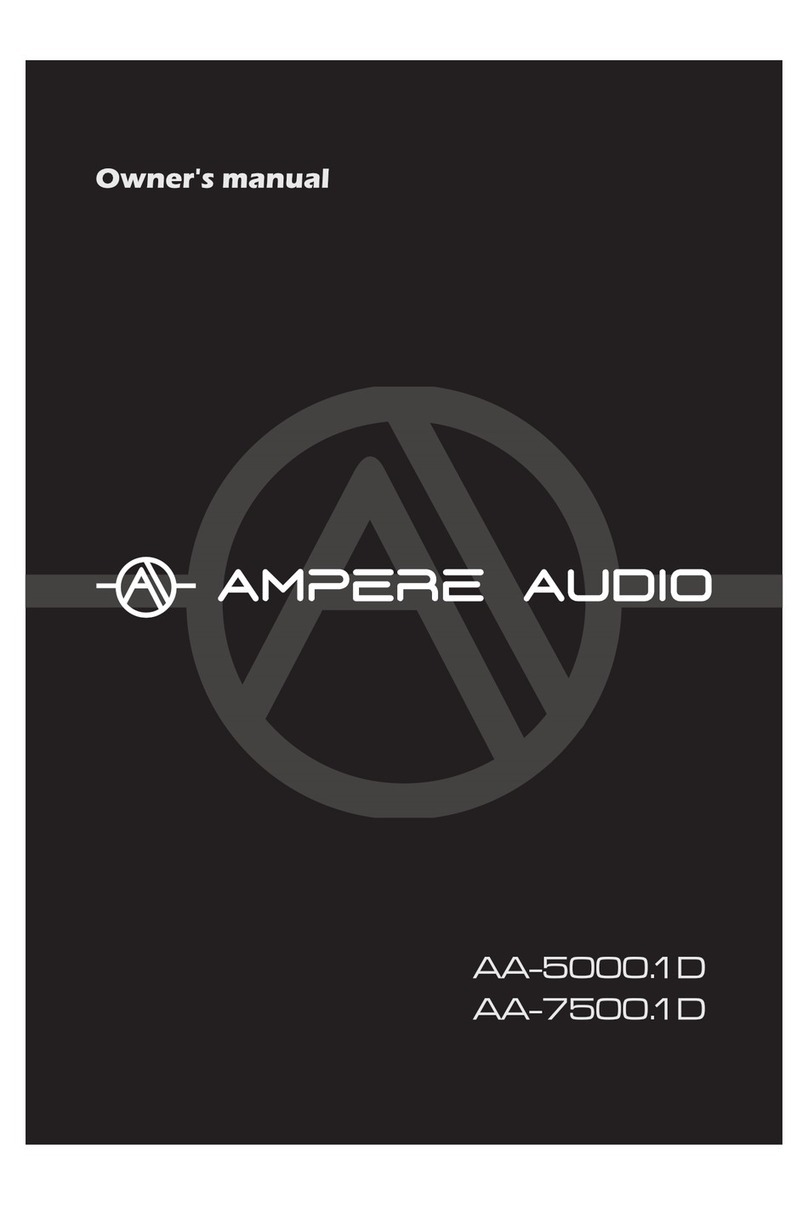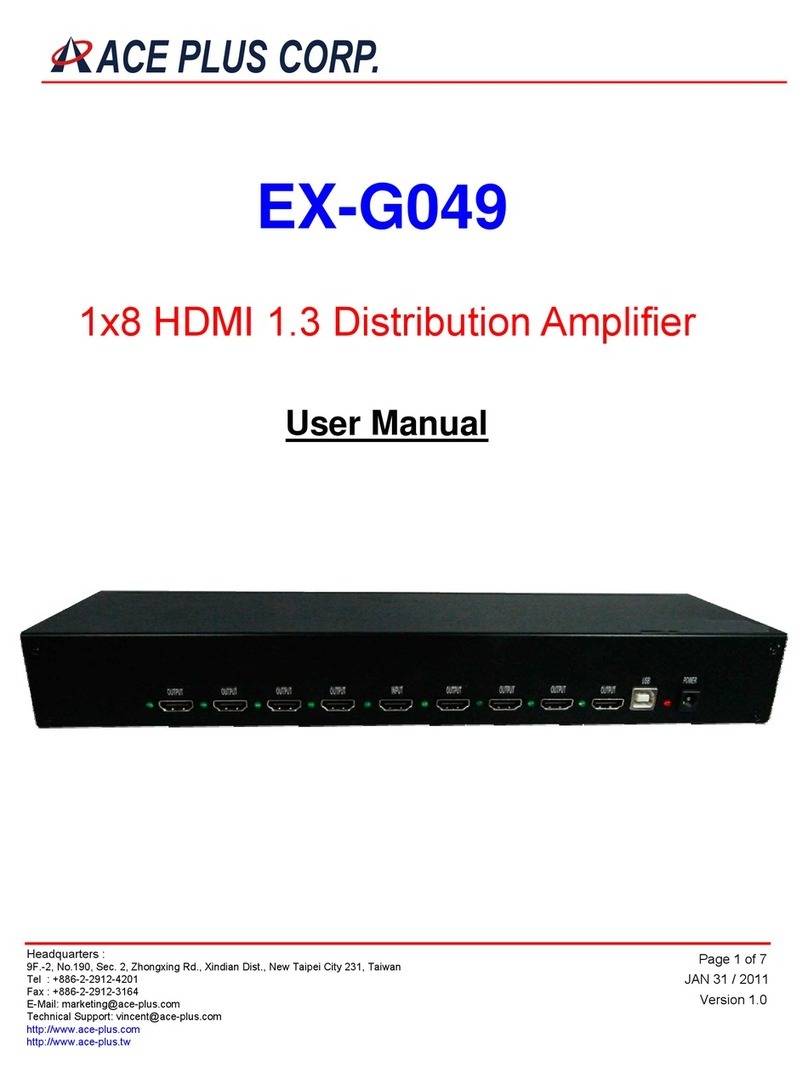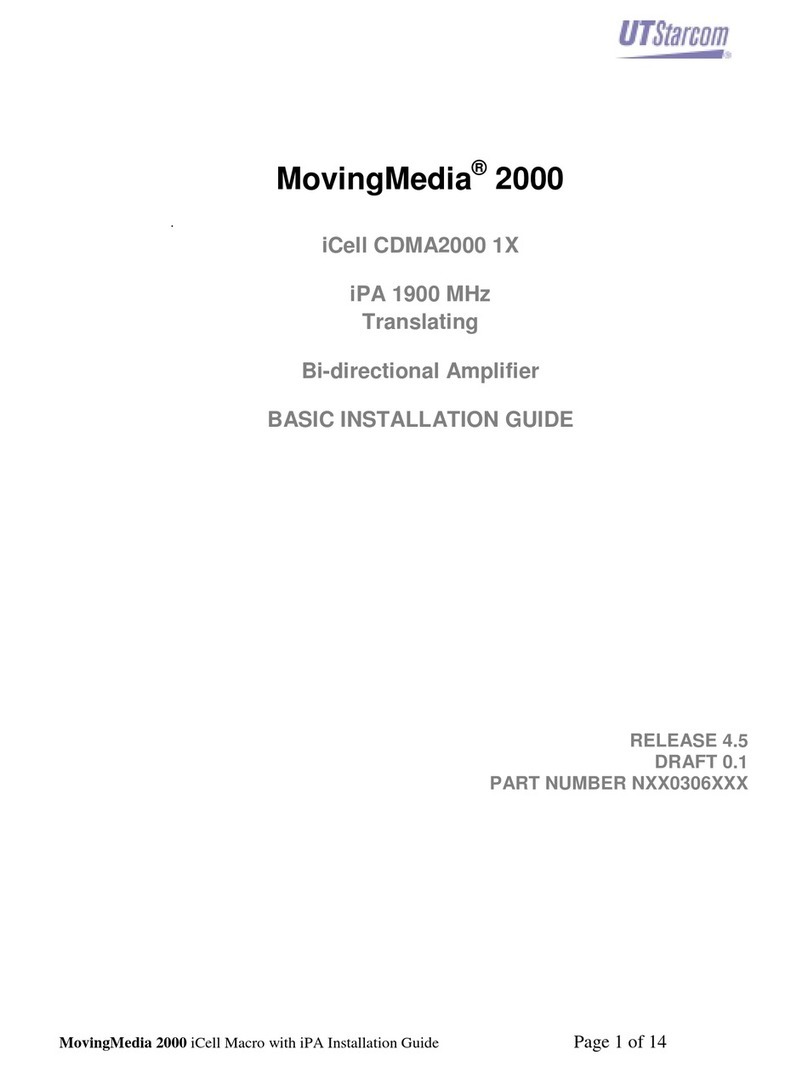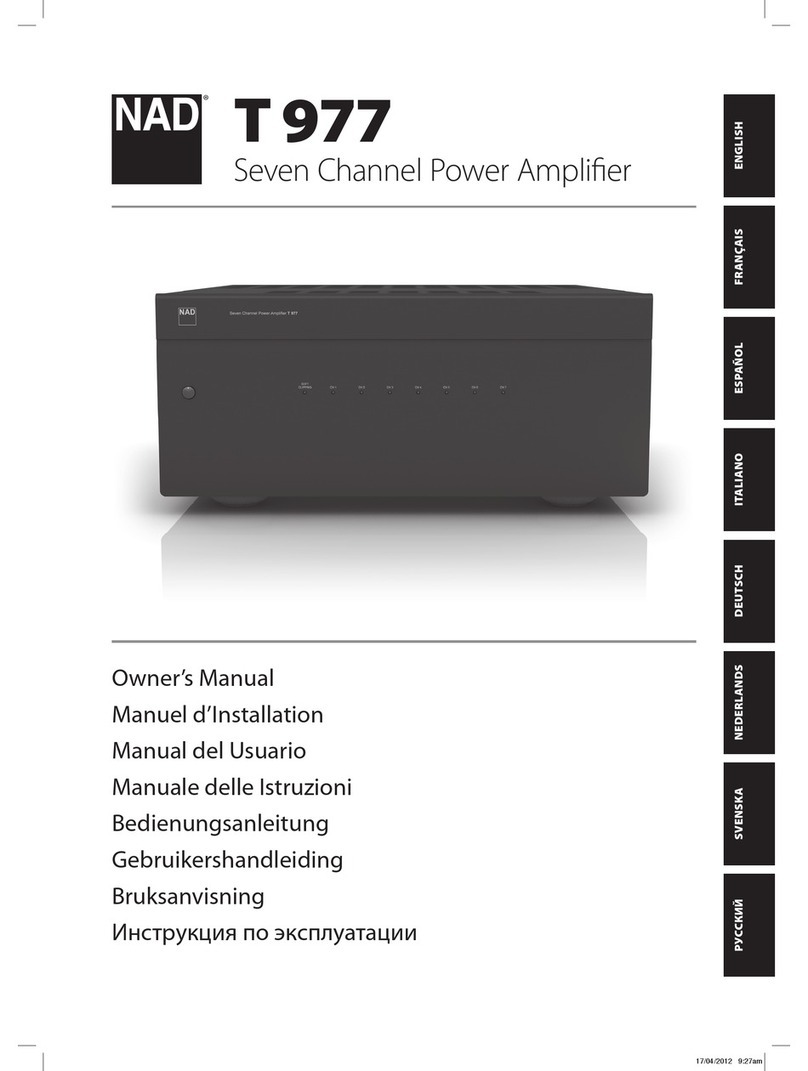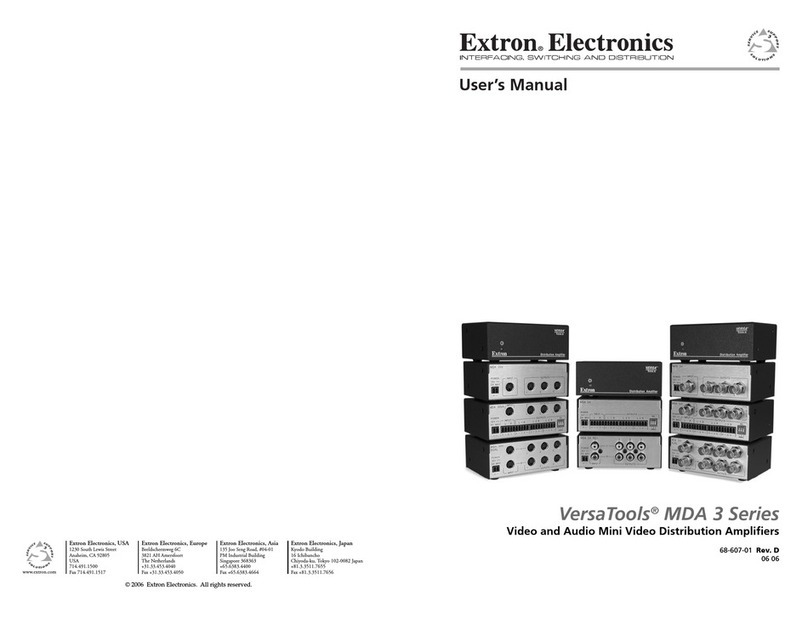
6
dc2032af
DEMO MANUAL DC2032A
operation
thermal impedance. Maximizing the copper ground plane
will also improve heat spreading and reduce inductance. It
is a good idea to cover the via holes with solder mask on
the back side of the PCB to prevent solder from wicking
away from the critical PCB to the exposed pad interface.
TheDC2032Ahasanominalworkingfrequency range from
50MHz to 1000MHz. It is not intended for operation down
to DC. The lower frequency cutoff is limited by on-chip
matching elements.
Setup and Testing Signal Sources
The LTC6430-15 is an amplifier with high linearity per-
formance; therefore, output intermodulation products are
very low. For this reason, it drives most test equipment
and test setups to their limits. Consequently, accurate
measurement of IP3 for a low distortion IC such as the
LTC6430-15 requires certain precautions to be observed
in the test setup and testing procedure.
Setup Signal Sources
Figure 3 shows a proposed IP3 test setup. This setup has
low phase noise, good reverse isolation, high dynamic
range, sufficient harmonic filtering and wideband imped-
ance matching. The setup is outlined here:
a. Highperformancesignalgenerators 1 and 2(HP8644A)
should be used in the setup. These suggested genera-
tors have low harmonic distortion and very low phase
noise.
b. High linearity amplifiers to improve isolation. They
prevent the two signal generators from cross talking
with each other and provide higher output power.
c. A low pass filter to suppress harmonic contents from
interfering with the test signal.
d. The signal combiner from Mini-Circuits ADP-2-9 com-
bines the two isolated input signals. This combiner
has a typical isolation of 27dB. For better VSWR and
isolation, use the H-9 signal combiner from MA/COM,
which features >40dB isolation and a wider frequency
range. Passive devices (e.g., combiners) with magnetic
elements can contribute nonlinearity to the signal chain
and should be used cautiously.
e. The attenuator pads, on all three ports of the signal
combiner, will support further isolation of the two input
signal sources. They will reduce reflection and promote
maximum power transfer with wideband impedance
matching.
f. The minimum loss matching pads, (Mini-Circuits BMP-
5075R or equivalents) are added to the test setup at the
DUT input and output. These matching pads transform
the DUT impedance from 75Ω to 50Ω to match the
characteristicimpedanceofmodernRFinstrumentation.
Testing Signal Sources
Thetestingsignalshould be evaluated and
optimizedbefore
it is used for measurements. The following outlines the
necessary steps to achieve optimization.
a. Apply two independent signals f1 and f2 from signal
generator 1 and signal generator 2 at 240MHz and
241MHz, while setting amplitude = –7dBm per tone at
the combined output.
b. Connect the combined signal to the spectrum analyzer
withouttheDUT (i.e.Thecombinedsignal, the minimum
loss matching pad, the F-type thru adaptor, the mini-
mum loss matching pad and the spectrum analyzer;
at this point, the spectrum analyzer should read about
–18dBm/tone for each main tone power).
c. Adjustthe spectrum analyzer for the maximum possible
resolution of the intermodulation products amplitude
in dBc relative to the main tone power. A narrower
resolution bandwidth will take a longer time to sweep.
Optimizethe dynamic rangeof the spectrum analyzerby
adjusting input attenuation. First increase the spectrum
analyzer input attenuation (normally in steps of 5dB
or 10dB). If the IMD product levels decrease when the
input attenuation is increased, then the input power
level was too high for the spectrum analyzer to make a










